
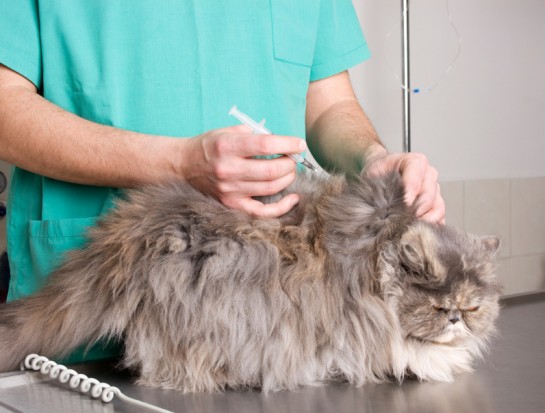
Like humans, cats may suffer from diabetes mellitus (sometimes known as simply 'diabetes'), with around 2 in 500 developing the disease. As with people, this may sometimes be associated with obesity and/or an inappropriate diet, and consequently in both species this disorder is becoming more common. Left untreated, diabetes will greatly affect your cat's quality of life and will ultimately be life-threatening. However, with veterinary advice and a highly committed owner, many cats can successfully be treated. This article will inform you about the nature of diabetes, the symptoms to look out for and how the condition may be managed.
In the normal cat, carbohydrates are broken down by digestion into the simple sugar glucose. Glucose is absorbed through the intestines into the blood and provides a vital source of energy for cells. The uptake of glucose into cells depends on the hormone insulin, produced by the pancreas. Consequently, insulin acts to lower blood glucose levels.
In the diabetic cat, this process is impaired, either due to the pancreas producing insufficient insulin or a failure of the body to respond to insulin. The cells cannot absorb glucose and the level of this sugar within the blood becomes too high. The kidneys try to compensate by excreting the excessive glucose and as a consequence the cat will urinate and drink more. With time, the cat will lose weight as the glucose cannot be used as a source of energy. The high levels of glucose can cause complications such as cystitis, or a more severe life-threatening disorder called diabetic ketoacidosis.
N.B. Cats can also develop a condition called diabetes insipidus, which also causes increased thirst and urination, but other than this it is completely different from diabetes mellitus. Diabetes insipidus is a relatively rare condition, so when you hear someone mention 'diabetes' they are usually referring to diabetes mellitus.
Diabetes can be diagnosed in cats of any age but is most prevalent in those of 10 years or over. All breeds are susceptible, although it is particularly common in Burmese cats. Both sexes, and both neutered and 'entire' cats may be affected, but it is most common in castrated males.
Virtually all diabetic cats will display the following symptoms:
Some cats will also show the following symptoms:
If you suspect that your cat has diabetes you should take him/her to your vet for a check-up as soon as possible. A fresh urine sample from your cat's litter tray can be checked by your vet for evidence of diabetes using a simple dipstick test for glucose. Obviously you will need to remove any litter or newspaper from the litter tray or use special non-absorbent litter obtained from your vet. Transfer the urine sample to a clean and dry container such as a jam jar, or ask your vet for a special pot.
Your vet will perform a thorough physical examination of your cat and will recommend blood tests to check the glucose level and screen for concurrent problems that could complicate treatment. A feature peculiar to cats is that stress may cause elevated blood glucose levels, so high glucose on a single blood sample does not necessarily mean that your cat is diabetic. Cats, like people, often suffer from 'white coat syndrome'! Your vet will probably recommend another blood test to measure levels of a value called fructosamine - this indicates how high the glucose has been on average for the preceding three weeks, so if this is also high it is consistent with diabetes.
It is usually possible to treat a diabetic cat but you should never underestimate the commitment required in terms of time, cost and emotion. If you are unable to do so then sadly it will be necessary for your cat to be put to sleep. It is important to note that, unlike in people, the aim of treatment for diabetes mellitus in cats is to control the symptoms rather than cure the disease, so long-term complications occasionally occur.
Unlike humans, diabetic cats do not normally respond to tablets or a change in diet alone. They require once or twice daily insulin injections to control their symptoms and this will usually be for the rest of their life. Because of this you will need to learn to administer injections. Your vet or nurse will teach you to do this (often getting you to practise on an orange first!) and you won't be 'let loose' until you are confident and happy. It is critical that these injections are given at the same time every day. If you go on holiday then you will need to find someone who can do this on your behalf, although fortunately many cattery staff are used to medicating these cats.
The frequency of administration and dose and type of insulin required vary from patient to patient. Cats are normally started on a relatively low dose of insulin (to minimise risk of over-dosage) and given a blood test every 1 to 2 hours for a period of 12 to 24 hours to make sure the glucose level isn't dropping too low at any point. This is called a blood glucose curve. If there are no problems the cat is kept on this dosage for the next 7-10 days and the glucose curve is repeated, once the body has had time to adapt to the insulin. In the interim you will need to monitor your cat closely to make sure there are no signs that the glucose level is dropping too low ('hypoglycaemia') as this can be very dangerous. If the glucose levels remain appropriate then the cat can be kept on this dose, but if they are too high or low at any point then the dose will need to be adjusted. Depending on response, the type of insulin or frequency of administration may need to be changed. Some cats can be controlled quite quickly, but it often takes a while to find the right dosing regimen and because of this the costs can quickly mount up. Even after a suitable insulin dosage has been found, your cat will need regular veterinary check-ups and blood tests to make sure that he/she is continuing to respond well to the medication and to monitor for any complications.
Diabetic cats benefit from a high ratio of protein to carbohydrate, so your vet may recommend a diet change. Many of these patients are either over- or underweight, so your pet may need to be put on a special weight-loss or weight-gain plan and checked regularly.
Despite the high degree of commitment involved, diabetes can be an extremely rewarding condition to treat, with many cats returning to a great quality of life.
Although any cat has the potential to develop diabetes, there are things you can do to reduce the risk. Obesity can predispose a cat to diabetes (as well as cause a multitude of other problems) so you should aim to keep your cat at a healthy weight. If you are not sure whether your cat is overweight then your vet or vet nurse will be happy to discuss this with you (many will do this free of charge). To be honest, most owners don't realise their cat is overweight (as we are so used to seeing chubby animals!), so a check-up will be of benefit to all.
A low carbohydrate-high protein diet lowers the risk of diabetes in cats - logical, as cats have evolved to eat a diet of meat, with minimal amounts of carbohydrate. Sugary treats are a definite no-no. There is currently some controversy amongst veterinary experts as to whether feeding wet food is better than feeding dry food in terms of diabetes prevention - but feeding wet food certainly won't do any harm in this respect.
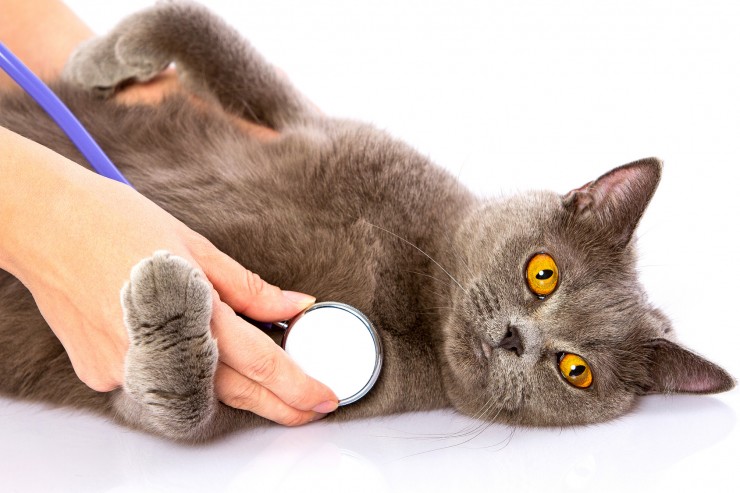 What To Look For When Choosing A Vet For Your Cat
What To Look For When Choosing A Vet For Your Cat
 The Life Expectancy Of Epileptic Dogs
The Life Expectancy Of Epileptic Dogs
 Rottweiler Hereditary Health And Health Testing
Rottweiler Hereditary Health And Health Testing
 Mealworms - How To Keep And Breed Them For Your Chickens
Mealworms - How To Keep And Breed Them For Your Chickens
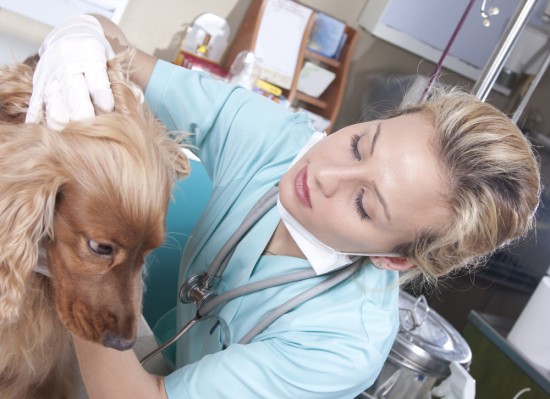 The Five Most Significant Changes To Veterinary Care Over The Last Eighty Years
The Five Most Significant Changes To Veterinary Care Over The Last Eighty Years
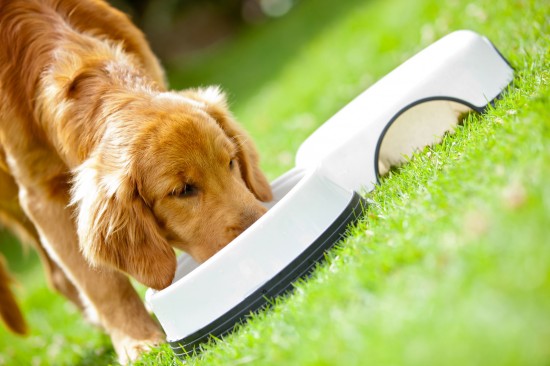 Eight Tips For Choosing A Good Quality Nutritious Food For Your Dog
Eight Tips For Choosing A Good Quality Nutritious Food For Your Dog
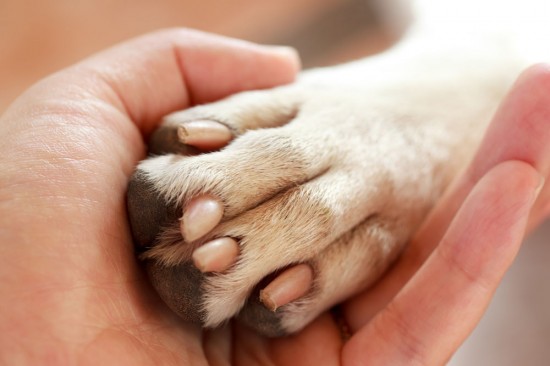 Winter Paw Care For Dogs
Winter Paw Care F
Winter Paw Care For Dogs
Winter Paw Care F
 More About The American Eskimo Dog
More About The Am
More About The American Eskimo Dog
More About The Am
 All About The Extremely Rare New Guinea Singing Dog
All About The Ext
All About The Extremely Rare New Guinea Singing Dog
All About The Ext
 Benefits of Installing Birds Protection Net
Benefits of Installing Birds Protection Net
Cl
Benefits of Installing Birds Protection Net
Benefits of Installing Birds Protection Net
Cl
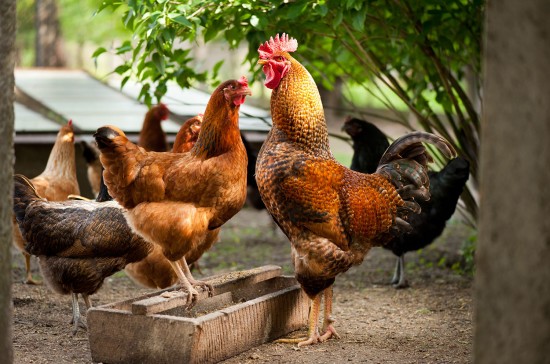 Worming Chickens - Worms And How They Affect Your Chickens Health
Worming Chickens
Worming Chickens - Worms And How They Affect Your Chickens Health
Worming Chickens
Copyright © 2005-2016 Pet Information All Rights Reserved
Contact us: www162date@outlook.com